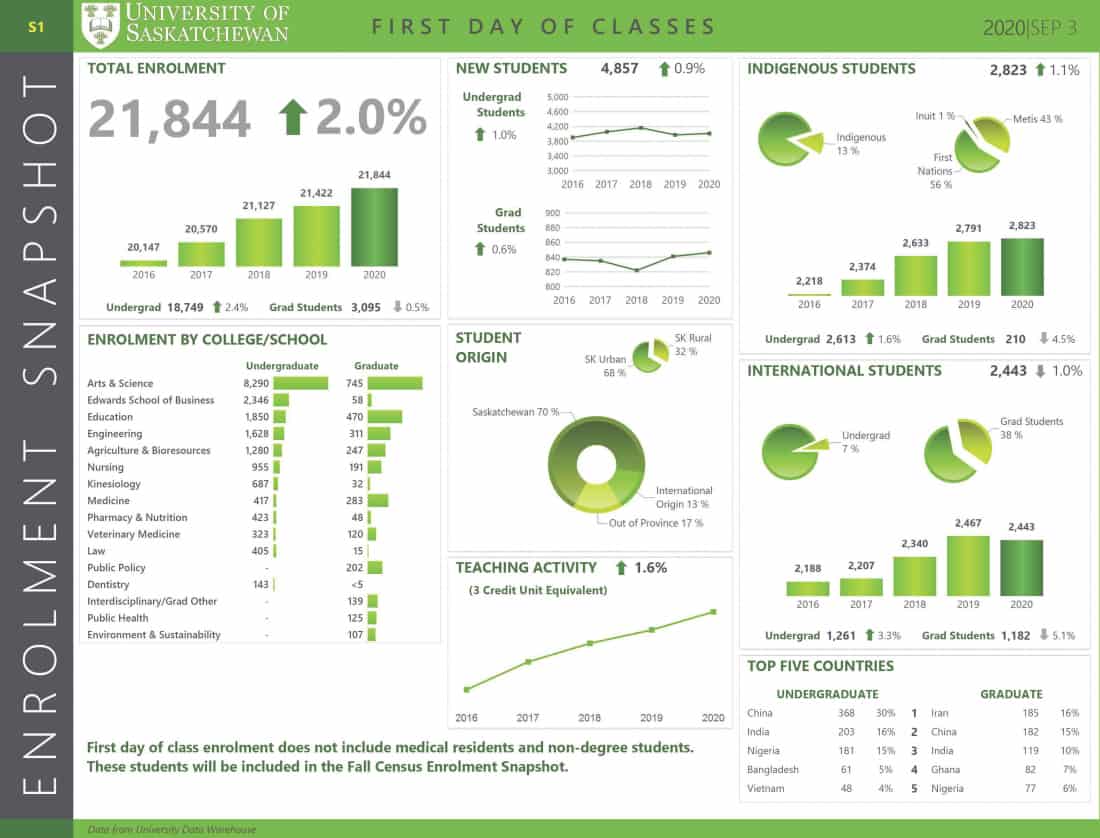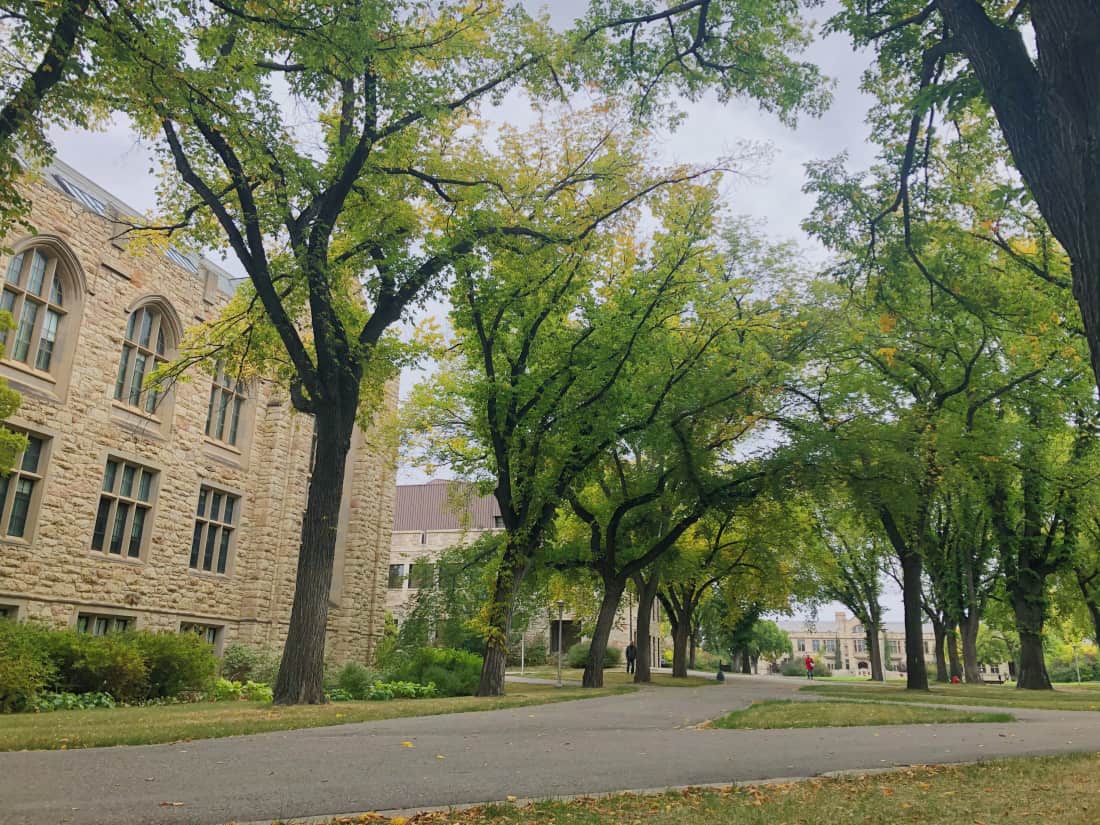
Despite the COVID-19 pandemic, students are still pursuing post-secondary education at the University of Saskatchewan in record numbers this year.
Undergraduate enrolment is up by 2.4 per cent at the University of Saskatchewan, while graduate enrolment is down by 0.5 per cent. This overall increase in enrolment of about two per cent from last year, however, includes a decline at the international graduate level of about five per cent.
Patti McDougall, vice-provost of teaching, learning and student experience, believes that the COVID-19 economy is contributing to the increase in enrolment, especially at the undergraduate level.
“I think it’s a good time for some people to be in university,” McDougall said. “Certainly, without having completed an undergraduate degree, I think it may be a challenge to get a job in this economy at this time.”
McDougall says that the same current economic situation has had a negative impact on other areas, however, and can partly explain the decrease in graduate students. Many graduate students that were admitted to the U of S have deferred their admission to a later date, according to Alison Pickrell, assistant vice-provost of strategic enrolment management.
“When I think about my own graduate student career, I could have imagined saying to myself: ‘Maybe I won’t start grad school this year; maybe I will wait because I can start next year,’” McDougall said.
Aside from the possible impact of the pandemic, Pickrell explains that the hike in undergraduate enrolment can be in part attributed to the increase in seats in undergraduate programs. This fall, saw an increase in seats in the Edwards School of Business, the College of Engineering and the College of Kinesiology, in-keeping with the university’s goals for growth.
“An increase was planned at the undergraduate level,” Pickrell said. “And so a lot of the growth that you’re seeing at the undergraduate level is the addition of those seats, plus an excellent [retention rate] of current students.”

In terms of international students, undergraduate enrolment is up by 3.3 per cent, although graduate enrolment has declined by five per cent. Pickrell says that this decline can be explained by the fact that up to a few months into the pandemic, the federal government did not count remote learning when granting postgraduate work permits.
“I think that it’s important to recognize that international graduate students are facing a number of what they might perceive as barriers to beginning their grad studies,” Pickrell said.
However, the federal government has now removed that restriction. McDougall hopes that this will have a positive impact on international graduate and undergraduate students and therefore increase enrolment.
Now that the admissions process for the term is over, Pickrell says that maintaining the university’s retention rate is going to be their next focus.
The U of S is going into an unprecedented Fall Term, but McDougall says that there is reason to be hopeful. She points to the 2020 spring and summer classes, where there was a higher number of students enrolled than normal, including both high school students getting an early start and continuing students catching up.
“And that, I think, gives us some confidence with regard to what the fall will hold, and how we are able to be flexible in reimagining our supports of students during this remote period,” McDougall said.
—
Wardah Anwar | News Editor
Photo: Ammara Syeda | Photo Editor, Supplied | Usask